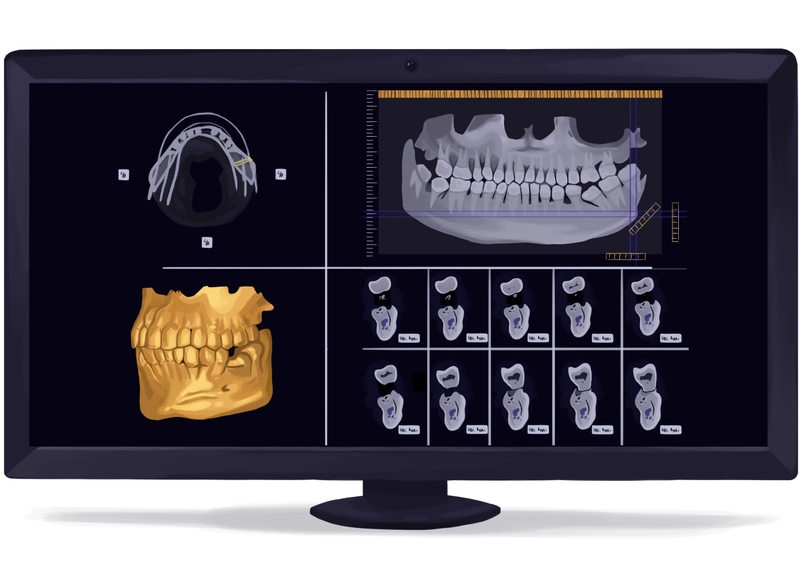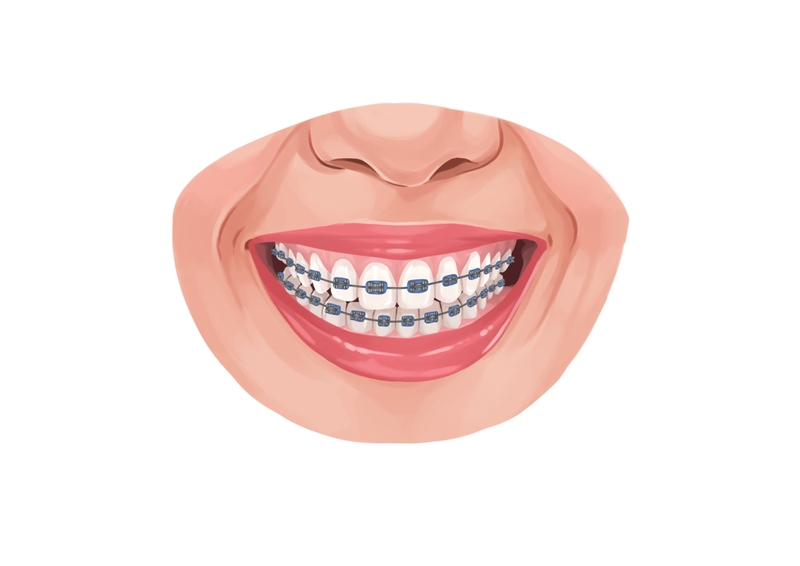- An open bite is a type of malocclusion that occurs when the upper and lower teeth do not match. An open bite can be of a dental or skeletal types.
- Genetic factors, the result of abnormal facial growth, or negative oral habits such as thumb-sucking are among the causes of this condition.
- Conventional braces, Invisalign, elastics, surgical interventions, bite blocks, roller appliances, vertical chin cup, tongue crib therapy, and behavior modification are some of the possible treatment options.
Get the smile you always wanted. Use Authority Dental to find affordable dental clinics near you. It’s simple, secure and free.
Do you suspect you may have an open bite? Here's everything you need to know.
What is an open bite?

Picture by Authority Dental under CC 2.0 license
An open bite is a form of malocclusion that occurs when the maxillary and mandibular teeth do not come together when the individual bites down. When the jaws are closed, the teeth do not align properly. There are two types of open bite: dental and skeletal.
A dental open bite is the result of malalignment during tooth eruption and presents as an anterior open bite. The anterior teeth are proclined, but the individual will still have correct facial growth and development. This could occur naturally or result from oral habits like thumb-sucking.
A skeletal open bite is due to abnormal growth of the facial bones and is typically genetic in nature. Abnormal growth can include the irregular development of the molars or jaws. A skeletal open bite involves the alveolar processes. The individual presents with hyper-divergency in the maxilla with an increase in the lower facial third and vertical dimensions.
Anterior open bite
As the name suggests, an anterior open bite (AOB) occurs in the anterior teeth. An AOP does not allow the maxillary and mandibular anterior teeth to come into contact with each other when the jaw closes. In cases of AOB, it may still be possible for the posterior teeth to occlude. However, there are cases where the AOB extends to the posterior teeth.
Posterior open bite
A posterior open bite occurs in the posterior teeth. Just as in the anterior teeth, a posterior open bite does not allow the maxillary and mandibular premolars and/or molars to come into contact. In cases of a posterior open bite, the incisors are still able to come together.
What causes open bite?
The cause of the open bite will depend on if the open bite is skeletal or dental related. In skeletal open bites, the cause is typically genetic and is the result of abnormal facial growth, as previously mentioned.
A dental open bite can occur naturally or as the result of negative oral habits such as thumb-sucking. A dental open bite may be caused by a disturbance in a natural eruption. This could be because the primary teeth fail to shed (ankylosis) or because the primary teeth fail to erupt.
How to fix an open bite?

Picture by Authority Dental under CC 2.0 license
There are multiple ways to fix an open bite, depending on the cause and presentation. Individuals will need to consult with their dentist, as well as other dental specialists.
Braces
Braces are commonly used to treat an open bite. Traditional braces use metal brackets and wires to move the teeth into correct alignment over time. When treating an open bite, braces may be used in conjunction with other treatments to correct the bite.
Invisalign
Invisalign may be an option for some individuals with open bites, but it is more limited on what changes can be accomplished. Invisalign is a clear aligner. Treatment involves a series of aligners that individuals wear over the course of several months.
Elastics
Elastics are often used during treatment with braces. The elastics are small rubber bands that are placed around a maxillary bracket and a mandibular bracket and help bring the teeth into the correct position.
Surgery
In cases of a skeletal open bite, surgery may be necessary. Surgical intervention can correct abnormal facial growth and the vertical alignment of the jaws and teeth. It is typically just the first step in treatment. Braces are usually recommended following surgery in order to get the best results.
Bite blocks
Bite blocks can sometimes be used to correct an anterior open bite. The bite blocks are placed on the mandibular molars on both the left and right sides of the arch. The blocks work to move the teeth backward over time, removing the space between the maxillary and mandibular teeth.
Roller appliance
A roller appliance helps prevent tongue thrusting, which is one cause of an anterior open bite. (Tongue thrusting occurs during abnormal swallowing patterns.) A roller appliance is a small roller-type bead that is connected to the maxillary molars via braces. It works to strengthen the tongue muscles and cease tongue thrusting.
Vertical chin cup
A vertical chin cup is a type of orthopedic appliance that is used to treat a skeletal open bite. It will control the growth of the lower third of the face and keep the chin from growing downward or backward.
Tongue crib therapy
A tongue crib is another way to prevent and correct tongue thrusting. It is placed inside the mouth and is connected by two rings that are attached to the back of the mouth. The crib prevents the tongue from pushing forward onto the anterior teeth.
Behavior modification
Behavior modification can work to stop a negative oral habit like thumb-sucking. It could employ the use of a device listed above, or the child could stop the behavior on their own if the parents work to help him or her correct the issue.
FAQ
Is it necessary to treat an open bite?
It is necessary to treat an open bite. The most obvious reason is to help with eating. In either an anterior or posterior open bite situation, it will be very difficult for the individual to chew foods. They may need to be selective about the food they are eating and will likely not get proper nutrition.
An open bite can also interfere with natural speaking patterns, resulting in speech impediments and improper pronunciations. Individuals with open bites often have a lisp. If left untreated, an open bite can cause excessive wear on the teeth that do come into contact. For instance, if only the anterior teeth can touch, all the biting and chewing forces will be placed on these teeth, and they will wear quickly, causing even more serious problems.
Lastly, many individuals choose to correct an open bite for aesthetic reasons.
How to fix an open bite naturally?
How long does it take to fix an open bite?
Does open bite get worse over time?